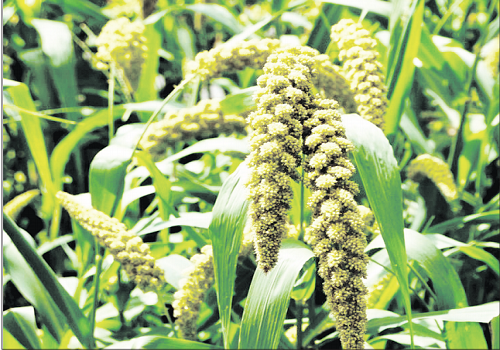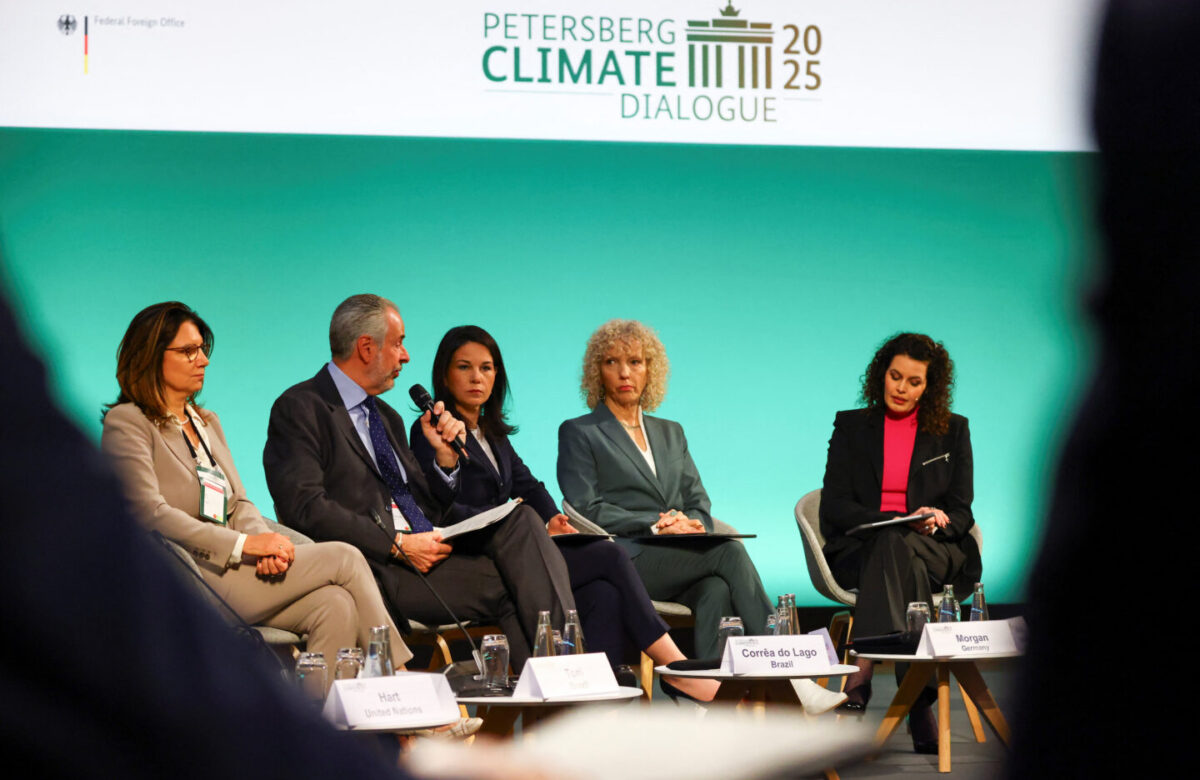
Increasing millet production in Nigeria
- Agriculture
- No Comment
- 1029
The bid to revolutionise millet and bring it back to the plate is being driven by enhanced seeds all over the world, DANIEL ESSIET reports.
The world’s millet market value is projected to surpass $12 billion by 2025, according to the Global Market Insights Inc, a United States-based research organisation.
Apart from this, the global millet consumption has been forecast to surge between this year and 2024. This is driven by the growing use of millet for snacks, which include flakes, cookies and chips.
Besides, the non-food use of millet has increased significantly, especially as animal feed ingredient and as raw material in breweries and starch industries. According to estimates, about 60 per cent of the millet production is for non-human consumption. However, in recent years, there is a renewed demand for millet as food for health-conscious urban consumers.
The Millet Market – 2019–2024 by ResearchAndMarkets.com projects that cultivation of millet, known for high nutritive value, will increase, following changing climate patterns and rising salinity that have forced governments to take alternative measures and encourage crop diversification; and farmers are following suit.
According to the International Crop Research Institute for the Semi-Arid Tropics (ICRISAT), more than 90 million people in Africa and Asia depend on millet, and 500 million in more than 30 countries depend on sorghum as a staple food. However, in the past 50 years, these grains have been abandoned in favour of developing more popular crops such as maize, wheat, rice, and soybeans. Consequently, there is a campaign for the development and wider adoption of high-yielding varieties.
For instance, the Food and Agriculture Organisation (FAO) has called for action to make millet a priority for achieving food and nutrition security, particularly in contributing to Sustainable Development Goals (SDGs) 2, 3, 12 and 13.
Following this, national and regional development plans in Africa, according to analysts, rely on millet to ensure food and nutritional security for the population. Scientists say they can survive even under extreme drought conditions. This is because millet is grown mostly on drylands, where other crops cannot be grown.
At present, there are efforts to promote iron-biofortified pearl millet to provide a convenient and cheap source of iron for people. This follows the fact that the nutritional content of the food basket is decreasing and the risk of nutrient deficiencies may be severe among children and women.
With support from HarvestPlus, scientists at ICRISAT have used conventional plant breeding techniques to develop biofortified varieties of pearl millet combining high iron content with high yield.
Iron pearl millet (IPM) varieties are aimed at providing more dietary iron to rural farming communities in arid and drought-prone regions where few other crops thrive.
ICRISAT’s Country Representative, Nigeria, Dr. Hakeem Ajeigbe, noted that the renewed focus on boosting the production of millet and highlighting its benefits, was critical to reducing over-reliance on more-commonly grown crops, boosting diverse diets and food security.
Acknowledging the role of millet in responding to nutritional, challenges, he stressed the need to increase the cultivation of climate-resilient millet for balanced and healthy diets.
Ajiegbe said farmers in 13 states received improved seeds of sorghum, pearl millet, cowpea and rice as a part of an initiative to cushion the pandemic’s impact on food systems.
The states were selected based on the importance of sorghum and millet as food crops and access of partners to needy smallholder farmers.
Particularly on pearl millet, he noted that following awareness on the existence of improved varieties, the adoption rate had increased.
His words: “Return on investment (ROI) was higher for farmers who adopted improved technologies (83 per cent) than for those who did not (43 per cent).”
He reiterated that ICRISAT had played a role in ensuring availability of quality seeds of pearl millet in Nigeria.
A lead agronomist for Flour Milling Association of Nigeria (FMAN), Tijani Abdullahi, noted that improving nutrition in the North would depend on reviving millet and other crops.
According to Abdullahi, millet remains a staple of millions of Nigerians. His words: “The key millet production areas in Nigeria are Borno, Yobe, Jigawa, Bauchi, Kebbi, Sokoto and Zamfara.”
Making investments in increasing productivity, processing technologies and a price guarantee for millet crops, according to him, will help to make the grains and products available at affordable prices to the common man.
He added that improving security had become critical as most of the areas dominant for millet production had some security challenges, hindering farmers to produce.
Abdullahi has had an extensive work experience with farmers in Kano and Jigawa states. In the last two years, he has collaborated with the farmers for the cultivation and introduction of drought-resistant crops in the North.
He believes support for crop diversification initiative would improve food supply in the North with better varieties of millet released to farmers.
In recent years, Nigeria has been experiencing a fall in millet. The decline is not only due to the reduction of cultivated areas, but also the production challenges.
Last year, analysts estimated millet production in Nigeria to be two million metric tonnes. The production volume stood at 5.2 million metric tonnes in 2010. However, the production volume experienced a decrease by 75 per cent compared to 2010, going from 5.2 million metric tons to 1.3 million metric tonnes.
In an interview, the Executive Director, National Agricultural Research and Liaison Services (NAERLS), Zaria, Kaduna State, Prof. Emmanuel Ikani, lamented the decline in the cultivation of millet.
Ikani attributed the problem to farmers’ inability to access improved seeds for cultivation, thereby making them to plant less than one hectare each.
According to him, the Boko Haram insurgency has contributed to a decline in agricultural production, as smallholder farmers have experienced the destruction of productive assets, lost access to farm inputs, and even faced displacement.
In Borno State, a major belt for the production of sorghum and millet, Ikani noted that sustained attacks on the farms had made millet cultivation difficult, despite the Lake Chad Research Institute coming up with many improved millet seeds.
While he called on relevant stakeholders to engage farmers in the rural communities, through enlightenment and sensitisation, to return to the production of millet, Ikani noted that the future of millet production depended on restoration of peace to the Northeast region.
ICRISAT works with farmer communities and its partners, including the International Fund for Agriculture Development (IFAD), focusing on millet, among others.
The Federal Ministry of Agriculture and Rural Development and Centre for Dryland Agriculture at the Bayero University, Kano (CDA-BUK) had partnered ICRISAT and Syngenta Foundation on Harnessing Opportunities for Productivity Enhancement for Sorghum and Millet (HOPE II) project.
The project spanning 11 countries focused on developing improved varieties and crop management practices to help smallholder farmers increase productivity under harsh, dry production environments in many parts of sub-Saharan Africa and South Asia.
So far, Nigeria has reported 21 per cert productivity gains from a package of improved practices in pearl millet. Forty-nine cultivars were released by the project countries (25 sorghum; 13 pearl millet; and 11 finger millet).
Reportedly, 178,447 mini-packs of seed were sold to farmers through field days, seed-producing farmers and local agro-dealers.
So far, there has been a shortfall of certified millet, in the 2020 cropping season, according to a forecast from the National Seed Committees of Member States of the Economic Community of West African States (ECOWAS) and the Permanent Interstate Committee for drought control in the Sahel (CILSS).
According to data, less than 10,000 metric tonnes of sorghum and millet-certified seeds were produced last year compared to a demand of about 100,000 mts. The data was collected from Benin, Mali, Niger, Nigeria, Togo, Cote d’Ivoire, Chad, Guinea, Gambia, Ghana, Senegal and Cape Verde.
The spread of COVID-19 in West Africa and the Sahel affected the 2020/2021 cropping season, particularly the supply of certified seeds to producers.
Consequently, some scientists have brought expertise and technologies spanning breeding and molecular biology to develop climate-resilient elite in-breeds and hybrids.
Led by UC Davis, the consortium is funded by a four-year grant from the US Agency for International Development (USAID), under the Feed the Future initiative for food security.
Also, researchers at the Department of Global Development, Cornell University, United States (US) are working on improving fonio, a special kind of millet, to play a big role in improving food security in West Africa.
At the moment, a form of millet with small grains, fonio, is being grown in West Africa; the research project is carried out by Cornell’s Climate-Resilient Farming Systems (CRFS) programme.
Meanwhile, the United Nations has declared 2023 as the International Year of Millet, considering the crop’s nutritional qualities, resilience to climate change and its potential to alleviate poverty among farmers in drought-prone areas.
In declaring the year, the resolution called on stakeholders to provide support to “activities aimed at raising awareness of and directing policy attention to the nutritional and health benefits of millet consumption, and its suitability for cultivation under adverse and changing climatic conditions, while also directing policy attention to improving value chain efficiencies”.
Written By: DANIEL ESSIET
Source: The Nation
Link: https://thenationonlineng.net/increasing-millet-production-in-nigeria/






